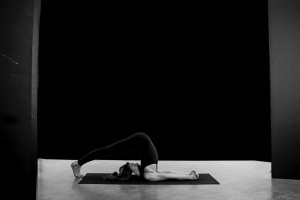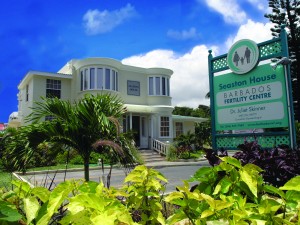Sexual Wellbeing: Taboo No More
- Published: Tuesday, November 1st 2016
- in Living Well
Ours is a world where every kind of “wellness” imaginable is explored and promoted, whether physical, mental, spiritual, environmental or workplace. But meaningful conversations about, and approaches to improve, sexual wellbeing have been seriously left out of the equation.
On the one hand we live in a sex-saturated world: bombarded with hyper-sexualized images and impossible ideals…and a strong message that you, too, should (and can) be having a lot of great sex (or something is wrong with you, so try this pill). On the other hand, since the dawn of Western Civilization, a powerful cultural puritanism has made sex all about shame (policing not just LGBT populations, but anyone whose sexuality falls outside an undefined orthodoxy). In this sexually confused culture, there has been little attention paid to helping people respect, explore and define their own sexual wellbeing (with or without a partner); little sexual literacy on how real bodies and sexual “parts” work (across a person’s lifespan); and very few places where people can go to heal sexual issues or proactively embrace and improve their own sexual health and happiness.
FUELING THE TREND
Landmark Year for LGBT Rights Cracks Open Wide Gender Identity and Sexuality Questions

2015 was the pivotal year for lesbian, gay, bisexual and transgender rights. Ireland (where homosexuality was only decriminalized
in 1993) became the first nation to legalize same-sex marriage by an overwhelming popular vote; the U.S. Supreme Court guaranteed every American the right to marry the person they love. If 21 nations (in the Americas and Europe, and South Africa) have now legalized same-sex marriage, the world (from China to Cuba) lit up social media in support, “rainbowing” their profile pix and hash-tagging “Love Wins.” And the transgendered revolution was televised, as the world was transfixed by the Caitlyn Jenner story.
The ways that fixed notions of gender identity and sexual stereotypes are being reformed is happening fast: from gender-neutral restrooms and dorms at colleges, to consumers demanding that every company/product support and reflect the gender spectrum realities, even new campaigns for un-gendered honorifics like “Mx” (bent on replacing the old Ms. And Mr.). While the issue of LGBT civil rights (to marriage, work equality, etc.) is really a different issue than sexual wellbeing, the unprecedented focus on the former has opened up a whole new set of conversations about the complexities of gender and sexuality for all. More women and men, straight and LGBT, find that the millennia-old scripts don’t work, and agree that everyone has the right to personally define what it means to be “happily coupled” (or happily uncoupled).
A New Wave of Feminism

We live in a world where the porn industry is largely accepted, but female sexuality still shocks, and it often seems people are more comfortable with transgendered than “conventional women’s” bodies. But a new wave of feminism (with a global, mainstream voice via social media/blogs and celebrities) is now taking a more in-your-face attitude towards everything from female body image to how female orgasms actually transpire. You see it in brash “regular woman” superstar comediennes like Amy Schumer, whose humor skewers everything from women’s underwear to unsatisfying heterosexual sex—to so many women celebs getting vocal about equal pay. If TV commercials have long represented menstrual blood as a clean, blue liquid, now girls/women are doing a little reality check by #LiveTweetingTheirPeriods. Recent trends lists argue that “2016 will be the year of underarm hair,” as women are dying them in technicolor hues and posting pix on the Instagrams. The new atmosphere: it’s time to get over the suffocating images of idealized, impossibly sexualized female bodies, and start getting real about them. Women want new, honest conversations; reality-based sex education; and tools to achieve personal models of sexual wellbeing—and wellness retreats, classes, online media and hospitals are starting to fill this void.
Younger Generations’ Open Mindset
Research shows that millennials and Gen Z have significantly different views on gender identity and sexuality. For instance, a recent survey1 of teens found that more than four in five revealed that they don’t care about a person’s sexual orientation.; they are exploring their sexuality more than in the past; and that gender does not define a person the way it once did. Other research2 reveals that eight percent of millennials claim an identity on the LGBT spectrum, more than twice the population average. These consumers of the future are more interested in sexual wellness generally, and products and experiences revolving around more stereotypical gender and sexual identities won’t fly with them.
THE TREND
Well, now some “adult steps” are finally being taken. With LGBT rights and a new wave of feminism bringing more evolved concepts of gender and sexual identities to the global mainstream—and given the fact that in a world obsessed with “total wellness” such a crucial component couldn’t remain in the closet forever—new sophisticated and more serious sexual wellness programming is beginning to happen at spas and wellness retreats, hospitals and fitness studios. And this sexual wellbeing trend takes wildly diverse forms: from new high-tech sexual fitness trackers and sex toys, to some out there “touch” therapies, to “sex-forward” hotels, to a new “Adult Sex Ed” served up online and in-person. Certainly not every development covered here will fit everyone’s lifestyle, or ideal of sexual wellbeing, but we vowed to check shame at the door.
Since the spa industry began, “sex” has been a feared concept/word (especially in Asia), given the long association between spas and “massage parlors” (and prostitution). So, for decades, spas, which are devoted to human touch and healing and often offer safe, personal and romantic sanctuaries and specialize in wellness coaching of all kinds, have bent over backwards to dissociate “what they do” from sex and the explicitly sensual, and have been intensely (if understandably) light on sexual wellness programs. When destination spas took baby steps years ago, they typically centered on couples’ therapy (how to improve communication, etc.). But the focus is now turning to more personal, proactive education, exploration and empowerment: like women’s-only retreats, with practitioners from sex therapists to pelvic floor health experts, that take a no-holds-barred dive into every aspect of sexual happiness.
In retreats, hospitals, fitness studios, and with new at-home technology, there is a ramped-up focus on a woman’s pelvic floor health and exercises that strengthen the (Kegel) muscles that support the abdominal and sexual organs from underneath—muscles that most of us don’t know about. (They not only prevent the leakage/incontinence that comes with aging, childbirth and sedentary lives, but these are the muscles that play a major role in sexual response and orgasm.)
Also on the fitness front: pole dancing and burlesque classes trending towards a place that would appeal to far more of us (beyond the “Real Housewives of Sexyville”), with more sophisticated, reflective workshops in true wellness (not selfie stick) environments.
Impressive things are happening on the hospital front as well, with more locations incorporating wellness and spa approaches (like acupuncture, physical therapy, massage and Pilates) in conjunction with programs led by doctors and sex therapists that address comprehensive sexual wellbeing and pelvic floor health issues. (The research estimates range from 30-50% sexual dysfunction rates for men and women.) And there’s no more impressive example than the new WOMANOLOGY®+ RESTORE HIM® clinics at Southern California’s Hoag Memorial Hospitals (more later…), which are true one-stop, sexual and pelvic health, integrative “shops.”
As Robin Christenson, founder of WOMANOLOGY + RESTORE HIM, puts it, “I’ve seen so many people who have consulted scores of doctors—for everything from pain during intercourse to an inability to have sex—only to be told it’s all in their heads. Sexual wellness has been so taboo, most people don’t even know it’s something that can be improved, much less that many medical and integrative approaches are so effective. Sexual and pelvic health programs are a real growth area at hospitals. And the future is to ensure these programs are delivered in dedicated, calm, spa-like centers that make people feel totally comfortable (not weird or ashamed), with multiple evidence-based, integrative therapies that can treat the complexities of individual sexual wellness issues—because one size most certainly does not fit all.”
Evelyn Resh, sexuality counselor and midwife, and former Director of Sexual Health at Miraval (Tucson, Arizona) and Canyon Ranch (Lenox, Massachusetts), and currently on staff at latter as a sexual health counselor, noted, “There is so much noisy sensationalism around sex, but an incredible amount of work still needs to be done to help people achieve basic sexual literacy. And there are so many questions to be asked, like what is ‘sexual health’ and for whom? What about people that have just had cancer/chemo, who are recently widowed or have a sick partner, or who are very happily, companionably partnered, but sex isn’t part of their relationship? No one talks about their issues. True ‘sexual wellness’ needs to span approaches for those who want more and better sex, as well as those that have decided it doesn’t fit into their life at the moment.”
“Paradigms need to be shaken up: like the dominant approach in the mental health community which sees a sexual disconnect in a couple as a symptom of an underlying relational disconnect, when, in fact, the relationship can be doing great and the sexual struggles need to be addressed on their own. We need to help people—young, old, gay and straight—get into their bodies, while being sensitive about what they’re actually ready to do, and their belief systems.”
ASPECTS OF THE TREND
Shh Retreats

Shh Retreats (stands for Sensual, Healing, Harmony) are held in beautiful estate houses in the English countryside and Ibiza, Spain, where a team of practitioners (from sex therapists to Somatic Experience specialists) immerse women in a crash course on improving their libido and pleasure, using everything from acupuncture, transformational breathing, Emotional Freedom Technique, and everything-is-on-the-table group therapy. It’s totally discreet: the venues are not disclosed and therapists only know guests by their first name. Shh is so successful they’re doubling their retreats in 2016 (to a dozen, and the website reports they’re coming to the U.S. soon).
Destination Spas: from Couples Therapy to Personal Empowerment

Despite the uncomfortable relationship between “spas” and “sex,” for years pioneering destination spas have offered some sexual wellness programming, typically focused on things like “getting the passion back with your partner” (i.e., better communication and intimacy for couples). But the focus is shifting towards bolder personal exploration. For instance, Canyon Ranch’s (Tucson, Arizona) February retreat, “Women, Sensuality & Health,” explores things like helping women foster more personal pleasure, while April’s (Lenox, Massachusetts) “Let’s Talk About Sex” is about jumpstarting personal sexuality, presenting sensitive info in un-puritanical language. In 2015 Canyon Ranch even held a “Sensuality and the Art of the Tease” retreat with a famed burlesque icon, with seductive sessions like mastering the “Burlesque Strut” and FitStrip classes.
Hospitals Out in Front
Many more hospitals are blending alternative and clinical approaches to address sexual and pelvic floor health for men and women: for instance, Mayo Clinic and Stanford University Hospital have excellent pelvic/sexual health programs for men, and Loyola University Chicago is an overall leader. But the way-out-in-front pioneer is Hoag Memorial Hospital Presbyterian’s WOMANOLOGY and RESTORE HIM clinics (founded by physical therapist Robin Christenson as “true” wellness centers, and acquired by Hoag in 2014). This groundbreaking collaborative concept, played out in a welcoming, spa-like setting, means physical therapists, psychologists/sex therapists, dieticians, acupuncturists, Pilates instructors, massage therapists, guided imagery therapists, and yoga and meditation instructors all team up to tackle every aspect of sexual and pelvic floor health—both the mind and body—across a person’s lifespan. (And most may be covered by insurance.)

From helping college girls with vaginal or chronic pelvic pain (from endometriosis or interstitial Cystitis); to fertility issues and the pregnancy years (from less traumatic birthing techniques to post-natal sexual issues); to the host of pelvic floor disorders (like sexual challenges or incontinence) that come with aging and menopause; to male sexual health and erectile issues; to even helping people undergoing gender reassignment with “gender conformation” therapies. Psychologists and sex therapists dish out all kinds of tools and anatomy lessons: from dealing with past sexual trauma, to individual or with-partner Sex Ed on things like “pleasure zones” (with a homework approach).
Christenson notes, “that people are just so relieved to not be alone. Because if knowledge is power, it’s intensely so when it comes to sexual health.” And this blueprint for what integrative sexual wellness will look like in the future is on the march: A WOMANOLOGY + RESTORE HIM clinic was recently opened at Hoag Health Center-Newport Beach, to be followed by a location in Irvine later in 2016.
Wellness Retreats Add Sexual Empowerment
More wellness-focused retreats are adding sexual empowerment programming. One example: Campowerment, a women’s sleepaway camp (Malibu, California & Poconos, Pennsylvania) with their amazing array of wellness, fitness and female bonding experiences, offers “Get Your Sexy Back” classes (with pole dancing), “Passion Parties” introducing women to vibrators and sex toys, and has OB-GYNs and physical therapists on their expert roster, delivering education on everything from sex drive to pelvic floor health.
Fitness: From “Yoga for Sex” to Classier Burlesque & Pole Dancing Classes

The Internet explodes with articles like “Yoga for Better Sex”—and while it’s certainly sexy clickbait, it’s also true. Studies3 indicate yoga improves all aspects of sex: arousal, performance, orgasm and ejaculatory control. Ancient yoga scripts taught poses to strengthen the pelvic floor muscles, crucial for (satisfying) orgasm. And yogi Lauren Imparato, founder of I.Am.You studio (New York City) notes that forms of yoga that refer to the root lock Mula Bandha “are the original Kegel exercise.” (Pilates targeting the pelvic floor muscles also has similar benefits.) If yoga has been purified as pure fitness, there has actually been a long, controversial sex-yoga connection since the 19th century.4 New studios are bringing that connection to the fore, like 305 Fitness (New York City), which is launching “Yoga 4 Better Sex” in February, all about opening up body parts that make you better in bed, and with the same sexy energy that 305 classes are known for. And if not sexual, a kind of “body liberation” yoga is on the rise, from more naked yoga, to new breeds like “Free the Nipple” (topless for women) yoga classes coming to the cool Astroetic Studios (Los Angeles), complete with trendy sound bath meditation.

Also on the fitness front: pole dancing and burlesque classes trending toward a classier “wellness vibe.” Examples: the new City Pole (Manhattan) where pole-dancing is part of wider confidence-building–there’s even spaces for personal meditation—or super-trainer Shay Kostabi’s burlesque strength class at the International Dance Academy (Hollywood).
At Studio Chic (Ontario, Canada) pole-dancing and burlesque-based “Hot in Heels” classes break down sexist myths about stripping.And if sensual fitness is rising, we wonder why there aren’t more Greek Bazouki or Middle Eastern belly dancing offerings, given that these are ancient traditions with the most sophisticated sensuality, that also work the core so intensely.
Couples Approaches Changing
There are a zillion spas and retreats all about the romantic, intimacy-inducing couples experience: the aphrodisiacal chocolates, the rose petals strewn in the private hot tub. But you can feel reinvention underway. The gorgeous, award-winning spa resort, Borgo Egnazia (Puglia, Italy), rewrites the ubiquitous side-by-side couples massage with its Paraveis treatment (in a private garden on heated beds). The ritual involves couples lying head to head, with their hands and legs linked between them and the two massage therapists. It also uses Italian folk dance and sword fights to improve intimacy. And if many sensuality retreats use an ellipsis to imply the sex that is the obvious goal, some are now getting beyond frank. The Orgasmic Enlightenment Retreats (Ubud, Bali and Xinalani Resort, Puerto Vallarta, Mexico in 2016) are more than up front that you will be immersed in new sex skills (like vaginal weight lifting) and sex toys, and assigned erotic sex dates with yourself or your partner—along with yoga, meditation and lots of champagne and truffles.
The Sex-Forward Hotel
Hotel historians5 argue that sex is as conflicted a concept for hotels as it is for spas: there is a often a Bible in every room, but hotels have always been “about” sex, with their vast, centerpiece beds. Now more sex-positive hotels seem to have put the conflict behind them with unapologetic amenities.6 At the SLS Las Vegas the “Intimacy Kit” features condoms, lubricants and a vibrator. At Banyan Tree Mayakoba (Riviera Maya, Mexico) there’s a “romance consultant” that brings you what you desire. At Toronto’s the Drake the “Pleasure Menu” spans vibrators, sensual oils, erotic movies, blindfolds, velvet restraints and a 24-carat dildo.
Out there and WAY Out There: from Cuddle Parties to Orgasmic Meditation
Sociologists agree that a “Loneliness Epidemic” is engulfing the human population, and in our digitally connected (and sexting), but increasingly touch-starved world, some “out there” new touch therapies are emerging. (The medical research concurs that touch is critical to human health, from the moment we’re born until we die.) “Cuddle parties” are on the rise, where (fully clothed) people gather (in a non-sexual, but intimate way) to hold and massage each other, nuzzle and cuddle. The official organization, Cuddle Party, now trains facilitators in 17 countries, and professional “cuddlers” also offer one-on-one sessions. For instance at Wamo (Berlin, Germany) 40 euros buys a four-hour touch party.
And for the “way out there” files, orgasmic meditation (or OM) has been making headlines for years (it was made for headlines), but is now expanding globally. At inhibition-shattering OM centers, women (lying in blanket “nests”) have their clitoris stroked by an OM partner for 15 minutes “in a non-sexual way,” with the goal of expanding the concept of sex, and creating a more therapeutic, mindful practice around female orgasm. The leader is One Taste (“Powered by Orgasms”) and there are over 10,000 practitioners globally, and 30 dedicated centers in the U.S., Canada and UK. And this “wellness lifestyle” company also offers private coaching and OM yoga and meditation retreats. One Taste has also begun TurnON events, revolving only around honest conversation and game-playing, giving people a far more accessible OM intro, without having to remove any clothes.
Kegel Exercise & Sex Tracking Apps
Strengthening the overlooked, sexual-pleasure-supporting pelvic floor muscles is being reinvented by a proliferation of “smart” gadgets. (And note: it’s not just aging and childbirth that lead to pelvic floor disorders, a study7 shows one in three female triathletes suffer from incontinence and pelvic-organ prolapse, and lots of fitness bouncing, like CrossFit, can take a similar toll.) The problem is that most women who try Kegel exercises at home fail. Now there’s hi-tech help from Bluetooth-enabled, egg-shaped Elvie, that tracks the efficacy of Kegel exercises (via motion sensors) and then connects to a smartphone app to provide biofeedback, as well as gamifying the exercises: you keep a little ball bouncing if you’re doing them right. And debuting last week is OhMiBod’s Lovelife Krush, that features smart Kegel exercising (with haptic sensors that give you vibration feedback “down there”)—but also connects to their TASL (the art and science of love) app, that can track your Kegel workouts or sex life, like giving you reminders to be intimate with your partner. The GO PLAY feature is the new pleasure twist: when you reach Kegel training goals you receive vibrational “rewards,” and it also lets people connect with their partners, like sending them challenges to spice up your love life. More “sexual health tracking” apps will appear, joining the avalanche of wellness gadgets that track steps taken or sleep.
Hi-Tech Sex Toys
The worldwide “sex toy” industry is a $15 billion market, and they’re evolving to be extremely high-tech, safe and suave.8 The sexual pleasure elves of Silicon Valley are busy, and if you can imagine it, it’s likely being engineered. We-Vibe devices (like so many now) connect to your smartphone, so vibrations can be controlled there, and they allow a remote partner to control the experience (as well as videolinks so you can see each other). And WeVibe is heavy in development on the world’s first couple’s vibrator, which will make penetration and vibrational clitoral stimulation simultaneous. From the U.S. there’s the Fiera Arouser for Her, described as a small, fast-acting and hands-free product that is designed for “before-play” – the moment you are not yet “in the mood,” but would like to be. Fiera uses a proprietary dual-action technology that utilizes gentle suction and multi-focal stimulation around the clitoris to enhance blood flow to the area. Sex toys will only get more immersive, creative and partner-connected going forward.
The New Adult Sex Ed
For many, “Sex Ed” was that (non-plain-speak) high school class they dreaded. But with so little sexual literacy, there’s a new wave of adult sex education and coaching—much thanks to the Internet, which makes learning about sexual unspeakables anonymous. There are endless blog and video examples, like 26-year-old YouTube sensation (roughly 1.5 million subscribers), Laci Green, whose “Sex+” channel addresses topics like “How do lesbians have sex?” or “Dirty vaginas.” Or actress Jessica Biel and WomanCare Global founder, Saundra Pelletier’s, just-launched, witty new Sex Ed video series at WomanCareGlobal.org. And new breeds of in-person sex-life coaching (beyond formal sex therapists) are rising. Like “Sex Life Coaching” by NYC-based Eric Amaranth, who leads book club-like forums for women friends where they can ask any blush-inducing question, and learn to have more orgasms (sex toys are introduced). Amaranth also offers sex coaching all over the world via Skype or phone, etc.
LGBT Travel Is Changing Tourism
The global LGBT travel segment is growing like wildfire (10% annually, or twice as fast as tourism overall9), and is now worth $200-billion-plus a year.10 And most travel brands and destinations are waking up and taking action. As Evelyn Resh notes,“After 2015’s same-sex marriage rights victories in Ireland and the U.S., travel companies lit up the Internet with support for gay and lesbian couples. And to court that vast travel and spa market (from gay wedding parties to family travel) businesses need to retool their messages and marketing to speak to LGBT travelers in all their diversity: there’s a big difference between gay men coming with their children and a gay female couple coming alone, and the ‘single brochure’ strategy isn’t enough. And thoughtful language is powerful medicine, for instance, changing “husband” and “wife” to “spouse” or “partner” in all you do and say.

The ways that tourism boards, hotels, cruises, spas, tour companies and destination wedding properties are making moves to engage this lucrative, growing market—whether through dedicated LGBT offerings, or just making the marketing and guest experience welcoming—is impossible to chronicle here. Brands like Hilton, Kimpton, W, Hyatt, and especially Marriott, have worked hard to reach LGBT travelers, the latter with its pioneering #lovetravels campaign, a photo/video series profiling same-sex and transgendered individuals at their properties. Tourism boards from South Africa to Spain to Scotland are courting LGBT travelers—and Ft. Lauderdale, Florida has even recently launched a dedicated transgendered campaign. And if gay-focused travel offerings traditionally centered on (older) gay men, you’re seeing more lesbian-owned-and-focused wellness travel offerings, like Pink Iceland, with its nature/adventure tours and weddings. When Anteros Cruises (yachting from the Mediterranean to the Caribbean) launches next year it will be the first cruise line pitched to all LGBT people (and their families/friends). As more markets recognize the legal rights of LGBT people, this traveling demo will only grow. And opening up travel experiences to all these diverse identities is very much a form of “wellness travel” itself.
Alternative Fertility Centers Rise

One goal of some sex is reproduction, and in many developed nations, where women are choosing to have children later in life (and they’re suffering increased stress), are experiencing serious fertility challenges. (Studies show profound disconnects between when women believe they can conceive babies and what their bodies are actually capable of.11) So the trend of women turning to wellness approaches (like hormone-balancing acupuncture and stress-reducing guided imagery and massage) alone, or along with IVF, will keep rising, as evidence mounts for their efficacy. There are, of course, thousands of acupuncturists, spas and wellness retreats all focused on fertility enhancement. Two examples: a standout “day” all-wellness fertility center: YinOva Center (New York City), which uses acupuncture, herbs and nutrition to naturally optimize conception (or in tandem with medical interventions), and a standout “stay” integrative fertility clinic: Barbados Fertility Centre, which combines the most cutting-edge reproductive medical procedures with lots of “wellness” (acupuncture, massage and reflexology). And which is notable for carefully tracking its results: with significantly higher IVF conception rates than the U.S. and UK average (where most of their patients come from), and with the wellness component (i.e., acupuncture and massage) making a five to 10 percent difference in conception to rates…which is significant.
THE FUTURE
This trend was initially identified as largely predictive. We saw shifts happening at the cultural level; at the wellness retreat, spa and fitness level; and at the hospital level. But in researching we were surprised to see so much happening on so many fronts. The trend still remains largely predictive, because centuries of shame around sex aren’t disappearing anytime soon. But also because there are still far too few places where people can improve their sexual literacy, address sexual health issues, and proactively embrace their own sexual happiness—with seriousness and sophistication.
With so many pieces to the sexual wellbeing puzzle the opportunities are great. And while the examples cited are overwhelmingly Western, because of the Internet, new conversations and markets around “sexual wellness” will keep opening up globally—even where conversations about sex are most taboo. When you have a conversation with a sexual wellness expert like Robin Christenson or Evelyn Resh, where every blush-worthy question is answered with professionalism and calm, you want to talk forever. And the wellness centers, spas, medical establishments, coaches and therapists, and alternative practitioners that can address “more sexual wellbeing” with professionalism will thrive.
The Virtual Reality Threat

A serious threat to human sexual wellbeing is the march of virtual reality (VR) technology into the bedroom, which will drive a serious wedge between sex and human intimacy. The advances in virtual reality, artificial intelligence and robotics are moving at lightning speed, and advanced labs like Hiroshi Ishiguro Laboratories (Japan) or Hanson Robotics (U.S.) are now creating incredibly human-like robots (they look, move, feel and talk like people). This technology, of course, is being busily exploited to create human-like sexbots and immersive, virtual-reality-based sex experiences. The future is nearly here: the company Abyss has created the robotic sex doll, RealDoll—while companies like eJaculator (U.S. & China) are reinventing adult “movies” via virtual reality. The race is on, and an excellent overview12 of this hotly debated development argues that, “people will be having sex with robots in the next five years.” Proponents of the sexbots argue that they will benefit millions of lonely people and could help stamp out prostitution and rape. Those who have major ethical issues (many academics—there is even an initiative, CampaignAgainstSexRobots.com), argue that they will destroy the capacity for human empathy and reify (sexist) ideas of sex/gender—and that while personal pleasure doesn’t have to be relational, true “sex” does.
Sexbots are the newest weapons in what now feels like a war against human connection. The digital era already has us spending all of our time in front of screens, not faces—and with forces like a radically aging global population, the Loneliness Epidemic will only sharpen. Some will put their money on virtual sex (and make more), but we’ll put ours on those industries and practitioners that create more human connection… and true, human sexual wellbeing. Going forward, we will certainly need them more.
TOP 10 SPA & WELLNESS TRENDS FOR 2016
- Surf’s Up! The New Wave of Wellness
- Sexual Wellbeing: Taboo No More
- Temazcal [temas’kal]
- Parenting Well: Serious Spa & Wellness for Kids
- The Adrenaline & Zen Cocktail: Resetting the Mind & Body
- Well-Fests: Festivals Shift from Wasted to Wellness
- On-Demand: Uber-izing Spa & Wellness
- Skin Care Gets Seoul-ful: The Korean Beauty Explosion 2.0
- Healthy Cruising:The Ship of Excess Has Set Sail
- Workplace Wellness Grows Up



